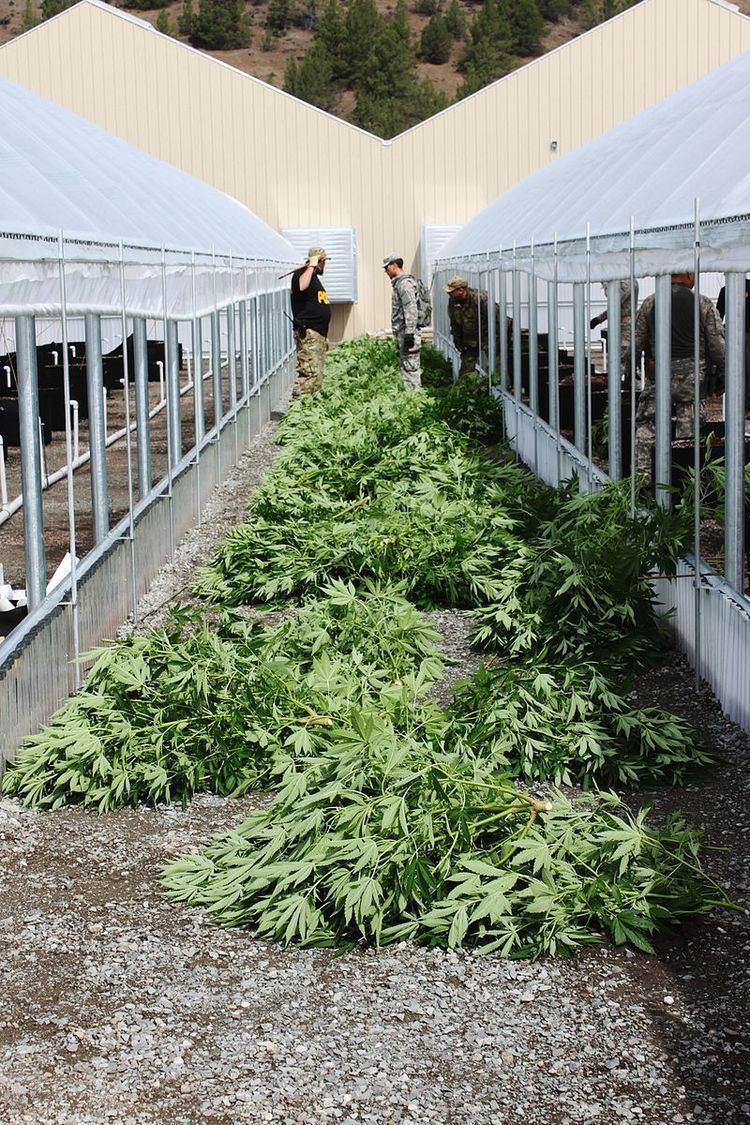 | ||
Cannabis on American Indian reservations historically largely fell under the same regulations as cannabis nationwide in the United States. However, the August 2013 issuance of the Cole Memorandum opened discussion on tribal sovereignty as pertains to cannabis legalization, which was further explored as the states of Washington and Colorado legalized marijuana. A clarifying memo in December 2014 stated that the federal government's non-interference policies that applied to the 50 states, would also apply to the 326 recognized American Indian reservations. U.S. Attorney for Oregon, Amanda Marshall, stated that the clarification had been issued in response to legal questions from tribal nations, but that only three unnamed tribes, in California, Washington state, and "the Midwest" had stated explicit interest in legalizing.
Contents
Oglala Sioux nation
The Oglala Sioux nation legalized industrial hemp in 1998, and the family of Alex White Plume began to produce the crop from 2000–2002, but federal authorities destroyed his crops and issued him a restraining order forbidding further cultivation.
In January 2014, the Oglala Sioux tribal council approved a proposal to hold a tribal vote to decide on legalizing marijuana on the Pine Ridge Indian Reservation in South Dakota, but the council later rejected the proposal.
Flandreau Santee Sioux Tribe
In mid-2015, the Flandreau Santee Sioux Tribe stated their intent to begin growing cannabis on one authorized site on their reservation, and commence selling the product on 1 January 2016, following a vote of tribal authorities which decided 5–1 to legalize cannabis. Under the regulation, buyers are required to consume the product on tribal property.
In November 2015, the tribe burned its cannabis crop after discussions with the state and federal attorney's general indicated they were at risk for a federal raid. A representative of the tribe stated in February 2016 that the tribe would pursue legislative solutions to move forward with their cannabis project.
Menominee Indian Reservation
In August 2015 the Menominee Indian Reservation held a vote on proposed measures to legalize medical and/or recreational cannabis. The Menonimee are uniquely placed in the state, as the only American Indian reservation which falls only under federal law, rather than under Wisconsin Public Law 280 like all other reservations in the state, meaning that the state of Wisconsin cannot prevent legal changes within the sovereign reservation. In an "advisory vote", the tribal membership voted 77% in favor of legalizing medical cannabis, and 58% in favor of legalizing recreational; the tribal Chairman stated that tribal legislators would next decide whether to move forward on the two issues.
Navajo Nation
In 2016, the Navajo Nation signed its first resolution to grown industrial hemp.
Suquamish Tribe and Squaxin Island Tribe
The Suquamish Tribe in Western Washington began selling cannabis at a tribal-controlled store in December, 2015, collecting the same 37% tax as the surrounding state. The Squaxin Island Tribe opened their first reservation cannabis store in November. Both tribes legalized marijuana internally, and signed 10-year compacts with the Washington State Liquor and Cannabis Board
2015 Modoc County raids
In July 2015, a joint operation by the Drug Enforcement Administration and the Bureau of Indian Affairs shut down grow operations on two reservations in Modoc County in Northern California. Plants and prepared cannabis were seized, but no arrests were made; news reporting indicated that the informant whose complaint sparked the raid was involved in a political power struggle with one of the growers, who is also her brother.
Opposition on tribal lands
The Washington Post in 2014 noted that the Yakama Nation of Washington State, following the state's legalization of cannabis, opposed legalization in ten state counties containing what the tribe considers its traditional lands.
